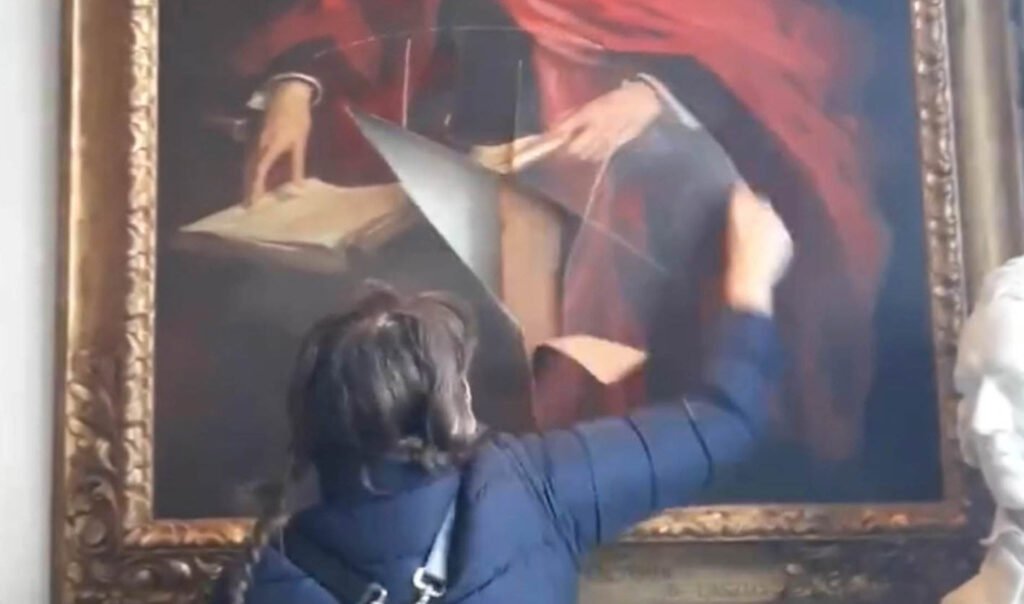
In a dramatic act of protest, a masked pro-Palestinian activist recently targeted a historic painting at the University of Cambridge in England. The incident has sparked controversy and raised questions about the delicate balance between activism, art, and historical significance.
The target of the activist’s ire was a portrait of Lord Arthur James Balfour, a prominent British politician and former prime minister. The painting, created by artist Philip Alexius de László in 1914, hangs at Trinity College, part of the University of Cambridge. Lord Balfour is a significant figure in history due to his role in the creation of Israel.
In a video that has since gone viral online, the protester can be seen spray-painting and slashing the portrait. The act was carried out by a member of the group Palestine Action, an organization advocating for Palestinian rights. The portrait, which had remained untouched for over a century, now bears the marks of this bold act of defiance.
Masked Palestinian activist completly DESTROYS historic British painting by slashing it with a knife and spray painting it.
The activist from the Palestine Action group ruined the Lord Balfour painting in Trinity College, University of Cambridge using a box cutter Stanley knife… pic.twitter.com/e8swYGWp2d
— Oli London (@OliLondonTV) March 8, 2024
To understand the gravity of this incident, we must delve into history. Lord Balfour served as the British Foreign Secretary in 1917 when the Balfour Declaration was issued. This declaration pledged Britain’s support for the establishment of “a national home for the Jewish people” in Palestine. While celebrated by some as a crucial step toward the creation of Israel, it has also been criticized as a catalyst for the ongoing Arab-Israeli conflict.
Cambridgeshire Police have launched an investigation into the incident. A spokeswoman confirmed that the painting was indeed damaged, with red paint sprayed across it and slashes inflicted upon it. No arrests have been made at this stage, but authorities are actively securing evidence and pursuing leads.
The act of defacing a historic painting raises complex questions. Is it a legitimate form of protest, or does it disrespect the value of art and historical memory? Supporters of Palestine Action argue that it serves as a powerful statement against colonialism and injustice. Detractors, however, view it as an attack on cultural heritage and a disregard for the preservation of history.
As the investigation unfolds, we are left contemplating the intersection of activism, art, and the weight of historical legacies. Lord Balfour’s portrait, once a symbol of political power and influence, now bears the scars of a passionate struggle for justice. Whether this act will be remembered as an act of defiance or as an act of vandalism remains to be seen.








